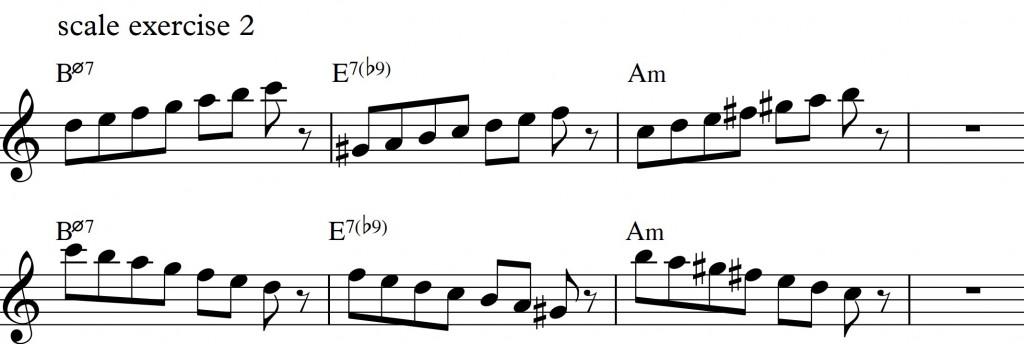4 tips on how to play amazing solos on minor chords
In jazz music there are so many tunes where you have long stretches of minor chords on which you should solo.
Just playing a Dm7 tends to get a bit tedious after a while.
Getting more vocabulary playing minor chords is both important for one or two bars and on long stretches of minor chords.
I want to show you how to spice the minor chord up melodically and harmonically with 4 great tips.
In this tutorial
What are the basic theory, chord and scale material of the minor chord?
Minor 6
Minor 9
Minor major 7
Dominant b9
Minor chord solo add on manual
Show, play and analyze a short solo on “Softly as in a morning Sunrise”
Get the full transcription of the lesson:
https://www.patreon.com/posts/43289637
Get more value from the Youtube lessons by supporting me:
https://www.patreon.com/sorenballegaardsaxophonelessons
Get the free E-book material on saxophone practice – sign up for my newsletter:
https://mailchi.mp/cc449eb965d2/soren-ballegaard-saxophone-lessons
Video links:
“Add ons for minor chord solos – minor 6, minor 9, minor major, dominant 7(b9)”
Transposed to the common minor keys
Patreon:
https://www.patreon.com/posts/43252315
Shop: https://sorenballegaard.dk/product/add-ons-for-minor-chord-solos-minor-6-minor-9-minor-major-dominant-7b9/
“How to play minor on dominant chords – 3 great minor sounds”
https://youtu.be/ExPAcooKQeI
Get more value from the Youtube lessons by supporting me:
https://www.patreon.com/sorenballegaardsaxophonelessons
Get the free E-book material on saxophone practice – sign up for my newsletter: https://bit.ly/subscribetomynewslettersorenballegaardsaxophonelessons
Subscribe for more free saxophone videos and lessons: https://www.youtube.com/c/SørenBallegaard
Lesson tutorials and live online lessons – check my shop:
https://sorenballegaard.dk/shop
Contact me for video exchange lessons or live online lessons
https://sorenballegaard.dk/saxophonelessons/
Facebook: https://www.facebook.com/groups/sorenballegaardsaxophonelessons
Instagram: https://www.instagram.com/sorenballegaard
Website: https://sorenballegaard.dk
Twitter: https://twitter.com/SorenBallegaard
My setup:
Video camera: https://amzn.to/2S7hrUv
Web-cam: https://amzn.to/3cf71cb
Music notation software – https://amzn.to/3gHW1ag
2x computer monitor – https://amzn.to/3gIclIm
Mini keyboard for music notation – https://amzn.to/3sVufcWTenor saxophone: Selmer MKVI 82xxx
Mouthpiece is an old Otto Link Babbit – refaced from opening 6 to opening 8/8,5
Alto – The Martin Alto
Soprano – Yanagisawa Elimona
Tenor reeds – https://amzn.to/2Qrk8zz
Alto reeds –https://amzn.to/2Pwv8Lu
Soprano reeds – https://amzn.to/3vnHfJS
Saxophone strap – https://amzn.to/3sV20Lt
Alto mouthpiece – https://amzn.to/3sZvdF0
Soprano mouthpiece – https://amzn.to/2R6mvI0
Alto Ligature – https://amzn.to/3xvCn7E
Tenor Saxophone Case – https://amzn.to/32SD1xG
Alto Saxophone Case – https://amzn.to/3aIqxgu



















